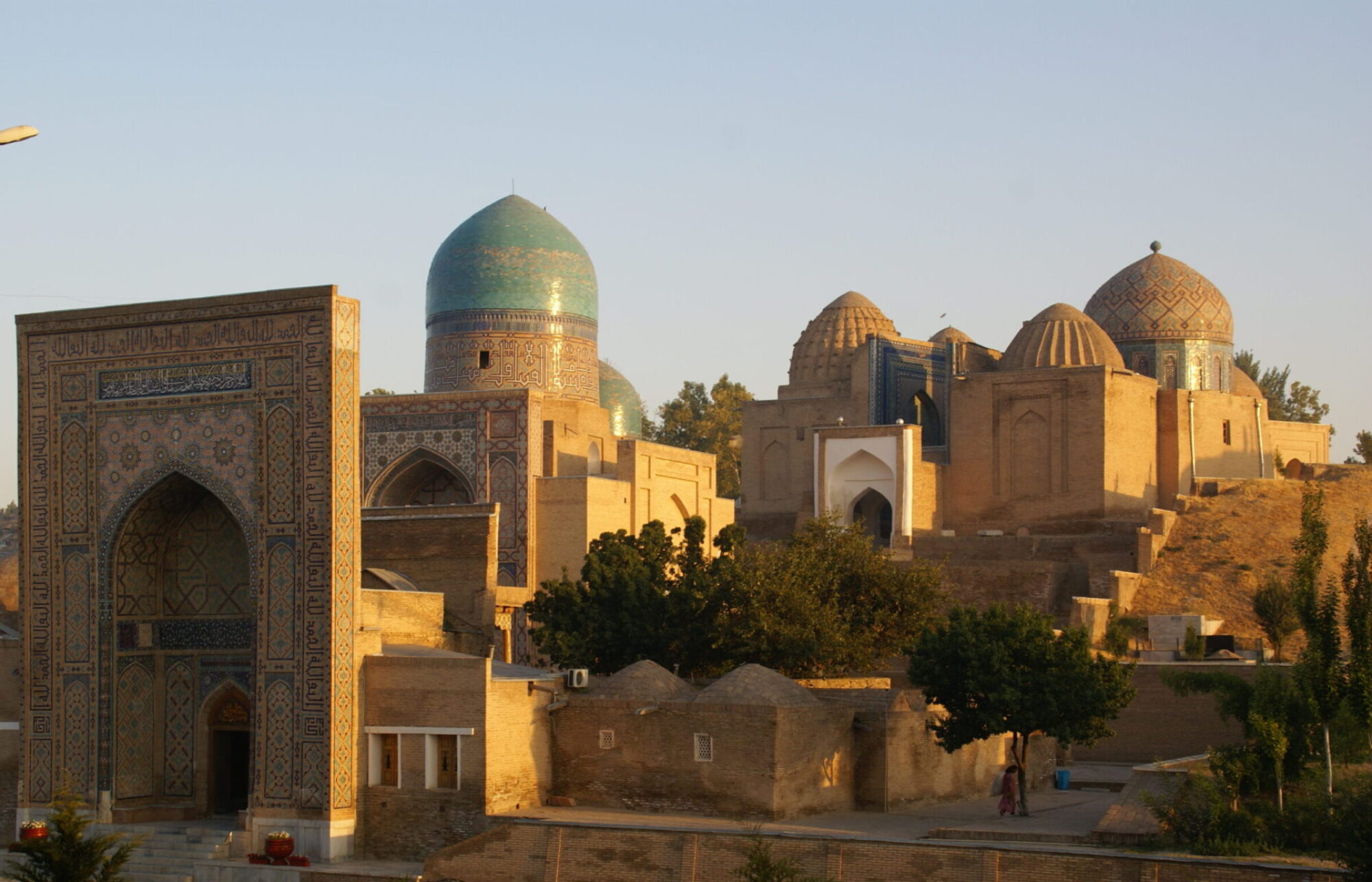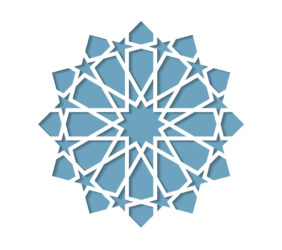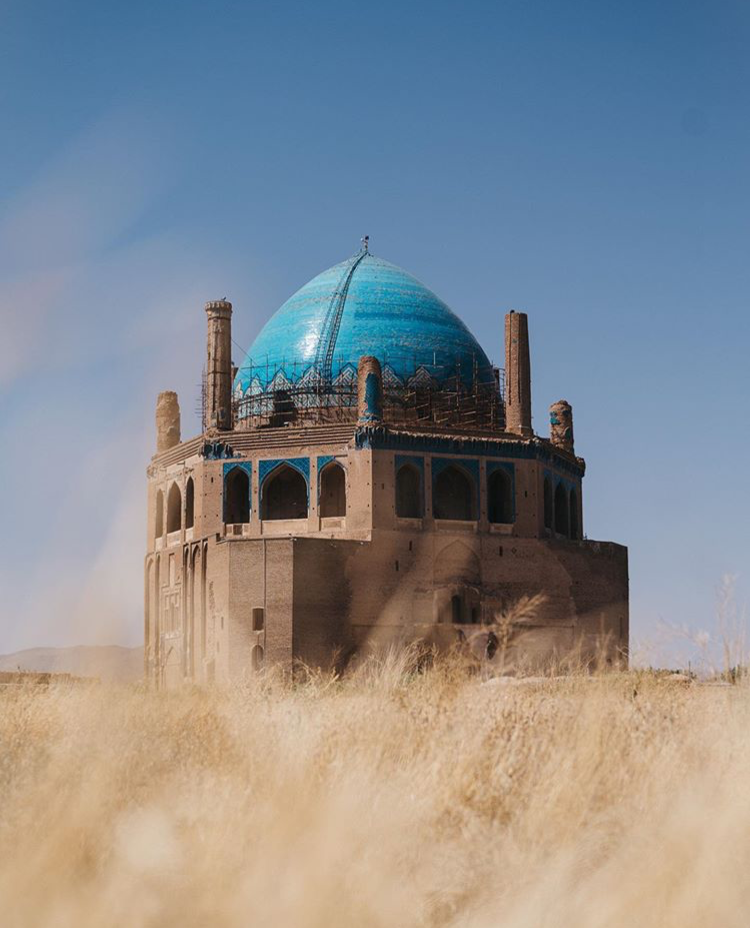The Mausoleum of Sultan Öljeytü (1304-1313) is one of the most colossal monuments of Islamic architecture. Upon converting from Sunnism to Shi’ism, the Sultan decided that the large mausoleum would be a shrine for Imam ʻAli and Imam Husayn, whom he planned to transfer from their resting places in Iraq. This decision resulted in modifications to the building during construction. After reconsideration, the scheme was abandoned and the building eventually became Öljeytü’s own tomb, as originally intended. The complex around Öljeytü’s mausoleum was organised according to the four-iwan plan, whereby the iwans (monumental gates) were connected by arcades around the open courtyard; the tomb was situated in the southern iwan. Öljeytü’s tomb complex followed the four-iwan plan of the Tabriz tombs of his brother Ghazan (1271-1304) and the renowned vizier and court historian Rashid al-Din (1247–1318).
The plan comprises a massive octagon with a rectangular burial chamber protruding from the southern side. Triple arches play an important role in the exterior composition of Öljeytü’s mausoleum: the octagonal plan is carried up to the dome’s base and each segment of the eight-sided gallery supporting the dome is divided into three open arches. The dome rests on the upper terrace, carried on the interior by the corbels of a thick wall. Eight minarets rise from the upper terrace at each of the eight corners. Western scholars have explained the existence of these minarets with Öljeytü’s striving for broader power and authority as a protector of the Holy Cities and a leader of the Islamic world, whereby multiple minarets were interpreted as a reference to the holiest sanctuaries of Islam in Mecca and Medina. The interior is divided into two stories of eight-bay arcades. A third arcade runs below the base of the dome, opening to the exterior and not the interior.
Öljeytü’s religious intention for the structure, as the shrine of the Imams, is demonstrated by the presence of the funerary sanctuary beyond the southern wall; a mihrab (prayer niche) included on the qibla wall (indicating the direction to Mecca) in the burial chamber and externally, the prioritization of the exterior wall facing Mecca, with more opulent decoration. The two phases of interior decoration may also reflect the change in purpose of the structure. The earlier decoration, intended for a religious monument, made extensive use of brick laid in common bond and Kufic inscriptions formed with turquoise glazed squares. The second phase may reflect the need to convert the structure into a space considered more appropriate for secular use. A dado of hexagonal glazed tile was installed, above which the entire interior surface, including the dome, was covered with a coat of plaster. The plaster was painted with decorative patterns and inscriptions, partially in relief.
The exterior decoration was apparently not changed during the conversion from a religious monument. The exterior of the uppermost gallery is decorated with glazed and unglazed terracotta and mosaic faience, the interior surfaced with exquisite painted plaster, visible from the outside. The structure’s cornice and the minarets were patterned with dark and light tile. The dome was covered entirely with turquoise glazed brick.



